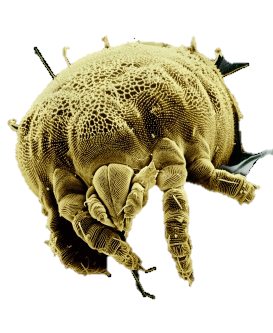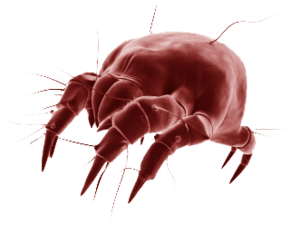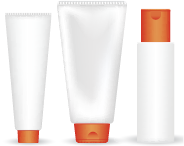
What Do You Know about Scabies?

Definition:
Scabies is a contagious infestation caused by Sarcoptes Scabiae. The mite, barely visible to the naked eye, burrows into the epidermis and lays eggs, triggering a host immune response that leads to intense itching in some parts of the human body in response to just a few mites.

Most Vulnerable Persons:
Scabies affects people from every country. Mostly it affects young children and the elderly of all ethnicities and social segments. Crowded living conditions, such as those found in child-care facilities, health-care homes, and prisons, increase the risk of spread.
Transmission:
Scabies mites burrow into the top layer of the human skin where the adult female lays eggs. It may be transmitted from the patient to others through:
- Prolonged physical contact with an infested person.
- Sharing of clothes.
- Sharing of towels and bedding.
Symptoms:
- Symptoms begin with itching that gets more intense at night, especially before sleep. The severity of itching increases with the length of the disease.
- Small red vesicles appear in distinctive parts of the human body, i.e. belly (around the navel and sides), finger webs, wrists, underarms, thighs, and the genital area. Intensive itching and neglect of treatment may lead to the development of skin sores and bacterial infections.

Crusted Scabies (Also Called Norwegian Scabies):
- Crusted scabies is an intensive condition of scabies that usually affects the elderly, the immuno-suppressed patients, and those who cannot scratch their skin due to paralysis or lack of sense.
- Crusted scabies is characterized by hyper-infestation with a huge number of mites (about 2 million), producing widespread scale and crust. Therefore, it is very contagious. Patients with crusted scabies are important to identify as they are a significant source of reinfection to the rest of the surrounding community.
- Significant itching may not be present in crusted scabies, due to change in the immune condition of the patient.
Diagnosis:
Scabies is diagnosed initially by examining the patient’s skin and ensuring the emergence of rash and burrows in the usual appearance parts. Scabies can also be confirmed by microscopic examination of a sample of the small burrows in the infected part of the skin.
Treatment & Prevention Guidelines
Treatment Guidelines:

Treatment:
Scabies can be treated by the application of a topical Permethrin (5% for patients and 1% for prevention-seekers). It is preferable to put the patient in a hot water bath and wash his body with soap well and then completely dry him/her and apply the medicine to the entire body areas.
When using Permethrin, please consider the following:
- It is best to be used at night before sleeping and left for 8-14 hours.
- Nails should be cut and treatment should reach underneath the edges.
- For a nursing woman, the medicine should be removed from the nipple before breastfeeding.
- It is necessary to treat all those in contact with the patient.
- Ivermectin should be used (according to instructions of the doctor).
- Bedding and clothing used by the patient in the last seven days should be washed in hot water (60 degrees Celsius) and dried in a hot dryer.
- The patient should bathe and use disinfectants regularly.
Prevention

Domestic Care during Treatment:
The severe itching may continue after the use of medication. The following steps may reduce itching:
Calm the skin: Immerse the body in cold water or use cool compresses on inflamed areas to relieve itching.
Use soothing creams: Use the over-the-counter (OTC) calamine solution, which can overcome the pain associated with itching and dermatitis.
Use antihistamines: As recommended by the doctor, OTC antihistamines can be used to alleviate the symptoms of skin allergies associated with scabies.
General Prevention:
- Transmission can be prevented by avoiding direct contact with the infected person's skin, clothing or bedding. It is usually recommended to use scabies treatment for members of the same family, especially for those who have permanent contact with the skin of the patient such as mothers.
- All family members and other vulnerable individuals should be treated at the same time as the infected person to reduce the chance of reinfection.
- Clothing and bedding used by the patient in the last three days prior to treatment should be washed using dry cleaning or hot water (60 degrees Celsius) and dried in a hot dryer.
- Non-washable items can be cleaned by preservation in a tight plastic bag for a period of several days to a week.
- Crusted scabies: The rooms used by the person with "crusted scabies" should be cleaned as soon as possible using extensive sterilization methods such as disinfectants. No pesticides in any form are required.
References:
- Centers for Disease Control and Prevention (CDC)
- Health Protection Agency (HPA)
- Mayo Clinic Group
- National Health System (NHS)
- The website of the Victorian Health Promotion Foundation in the Australian state of Victoria (health.vic).
- World Health Organization (WHO).





